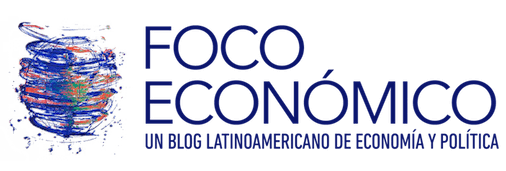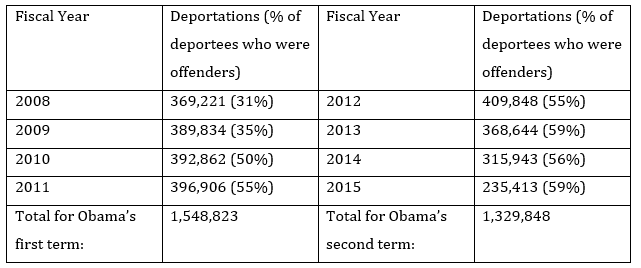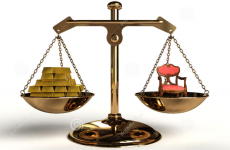Donald Trump’s election as President of the United States has sparked a great deal of speculation. In this post, we will analyze the political viability of some of his proposals and explore the effects that their implementation may have on the United States and the rest of the world.
Immigration: Trump wants to make US immigration policy stricter and wants to deport two million illegal immigrants, with those who have committed any kind of offense being the first to go. While this policy may seem very harsh, it is worth taking a moment to look at the statistics on deportations during this past Administration. Table 1 shows the number of deportations for each fiscal year. As you will see, during Obama’s second term of office, 1,548,823 people without visas were deported, while the figure for his first term was 1,329,848. In addition, the deportation of undocumented immigrants who have committed an offense is already a pillar of the country’s existing immigration policy. Since Homeland Security already has enough funding to deport between 400,000 and 500,000 people per year, Trump could reach his target of two million deportations in his four-year term without even having to ask Congress for more money.
There are other ways in with the Trump Administration may tighten up immigration policy as well. For example, he could suspend the temporary legal status that has been granted under the DACA program to minors who entered the US illegally, and he could make it harder for people to get a work visa or to be admitted to the country as refugees. In short, while we are sure to see a tightening up of immigration policy, our impression is that much of that change is going to take the form of rhetoric. (But we should not forget that this kind of rhetoric is dangerous in itself.) As we have talked about before in this blog (see here), the political economy of immigration is a very thorny issue, since workers in rich countries may have strong incentives for supporting restrictions on the entry of foreign workers.
Table 1: Deportations from the United States
Source: Data compiled by the Migration Policy Institute as reported by Ben Casselman.
Trade Policy: Trump has also said that he will make changes in the country’s trade policy. Although it is unclear exactly what those changes will be, on several occasions he has talked about renegotiating free trade agreements that the US has signed with various countries. More recently, he has proposed placing a 35% tariff on imports from China. We believe that, given the intricate structure of the global production chain of which major US companies are a part, it is unlikely that Trump’s protectionist proposals will find fertile ground among Republican legislators, who hold a majority in both the Senate and the House of Representatives. A more probable outcome is that the United States will roll back its strategy of signing new trade agreements and that Trump will make use of the discretionary power vested in the office of the president to introduce certain kinds of trade barriers in specific cases. Clearly, if the United States takes a sharp turn back toward protectionism, the costs for the world economy will be very high. Finally, it is important to remember that, although both theory and empirical evidence show that countries are better off with free trade, the fact remains that international trade generally creates losers as well as winners. And, in fact, it is quite likely that many of the workers who voted for Trump in key battleground states such as Michigan and Pennsylvania will be among the losers. This raises a very important question: What is the best way to go about compensating them or offsetting those effects? We do not think that protectionism is the way to go. In fact, it is highly questionable if, even under a rabid form of protectionism (but one of unknown duration), businesspersons could be convinced to sink capital into American soil for industries that have already been moved to lower-wage countries.
Infrastructure: While Trump was running for president, he repeated over and over again that US infrastructure needs to be upgraded. Everyone knows that many American cities no longer have cutting-edge infrastructure and, in many cases, are getting by with woefully obsolete transportation infrastructure. In fact, the major investment projects in the world today include few, if any, mega infrastructure projects sited in the United States. It therefore seems that the key factor to look at are the criteria used to select investment projects. If Trump plans to focus on public works that are based on a carefully thought-out fiscal plan and that yield a high social rate of return, such as the interstate highway system construction project did in its day, then that is all to the good. If, on the other hand, his plan is to use public works as a means of energizing the economy in the short run, without taking those projects’ social rate of return into consideration, then he will be heading down the wrong path, especially in view of the fact that the American economy is basically at full employment. An even more challenging issue has to do with the distributive effect of public works. If the idea is to raise the wages of the unskilled workers that who got Trump into the White House, then public works may play a very important role. However, although the infrastructure sector is intensive in capital and unskilled labor, the fact remains that the places where new infrastructure projects could yield the highest returns are not necessarily the same as those where most of those unskilled workers are located. This entails a very tricky trade-off that needs to be analyzed in depth. Finally, Trump may well find the political support he needs for his infrastructure projects among Democratic members of Congress. Some Republican legislators may also lend their support if they think that the projects will help to cement a political shift in a number of pivotal Midwestern states (something that Democratic legislators should bear in mind), although we imagine that many Republicans will place priority on reducing the tax burden.
Taxes: Trump says that he will close tax loopholes while at the same time lowering marginal income tax rates. Closing loopholes will heighten efficiency and equity, since the innumerable deductions that now exist generate distortions in all directions. Because tax regulations are so incredibly complex, large corporations and the richest members of the population can use those rules to gain unfair advantages over the rest of us. But as for lowering marginal income tax rates, there we disagree, because a progressive tax scheme helps to create a more just society. The fiscal side of his proposal is another cause of concern. The Trump Administration may well drive up the fiscal deficit sharply in order to finance its infrastructure program and its planned tax reductions, which could in turn lead to cuts in funding for developing countries.
Regulation of the Economy: Everything seems to indicate that the Trump Administration, in line with the majority stance of the Republican Party, will relax regulations on the economy. This may have positive effects in some cases but may lead to greater economic concentration in others. The specific proposals in this area will need to be evaluated one by one.
Defense and Security: Many of the United States’ allies around the world have voiced concern in the wake of Trump’s election. So far, there is not a great deal of clarity about the actual nature of his proposals in the area of defense and security. During the campaign, it seemed that Trump was planning to expand the United States’ position as a world power while at the same time cutting its global defense spending. Clearly, this is unrealistic. The United States could, for example, decide to reduce its contribution to NATO and ask the European countries to raise theirs, but this would come at the cost of diluting its decision-making power within the alliance. If Trump bases his actions on the premise that the United States can have a free lunch in the area of national security, he will very probably end up alienating allies and strengthening enemies.
Social issues: Alongside Trump’s position on social issues such as abortion, same-sex marriage and racial issues, he will no doubt nominate a very conservative candidate for the Supreme Court and will adopt conservative social measures (and, indeed, his nominations during this past weeks bear this out). This is his best source of bargaining power for dealing with Republican legislators and for consolidating his position with traditional Republican voters. Middle-class liberals in the cities will hate it. Members of the religious right in rural areas will be eternally grateful. Voters in key battleground states won’t care one way or the other. Unfortunately, a return to conservative social policies will hurt not only the liberal middle class but also poor households that receive government assistance under one or more of the many programs that provide aid to needy families. This includes the possible changes in the Affordable Care Act that have been announced. From a normative and political standpoint, this is an incredibly disturbing prospect.
Institutions: One issue that came up time and time again in many analyses of the campaign while it was going on was Trump’s failure to abide by established institutional rules. For example, on a number of occasions, Trump has shown disdain for the media and free press and even went so far as to state that he would accept the election results only if he won. Have the American people become so politically polarized that the checks and balances and other constraints on the exercise of the president’s discretionary power are under threat? Experimental evidence indicates that, the greater degree of polarization, the greater the profits of those who implement public policy (see here). It is our hope that, in the end, the United States’ long institutional tradition of checks and balances will prevail and that the Trump Administration will fall into line with that tradition. No matter what, however, this will be an area in which American democracy will be put to the test.
In Conclusion: A few things should be pointed out. First, those who expect that this Administration will make a very poor showing are, we believe, implicitly basing their view on the belief that there will be a close correlation among the risks associated with bad decisions in each of these areas. We are hopeful that the political and institutional checks and balances that are in place will prevent this from happening. Second, this campaign and this election have skirted the issue as to what exactly an optimum policy package for the United States would be. We believe that there is no easy answer to that question, which makes it all the more important to embark upon a debate concerning that question as soon as possible.




















